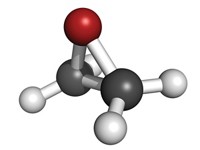Advertisement
Grab your lab coat. Let's get started
Welcome!
Welcome!
Create an account below to get 6 C&EN articles per month, receive newsletters and more - all free.
It seems this is your first time logging in online. Please enter the following information to continue.
As an ACS member you automatically get access to this site. All we need is few more details to create your reading experience.
Not you? Sign in with a different account.
Not you? Sign in with a different account.
ERROR 1
ERROR 1
ERROR 2
ERROR 2
ERROR 2
ERROR 2
ERROR 2
Password and Confirm password must match.
If you have an ACS member number, please enter it here so we can link this account to your membership. (optional)
ERROR 2
ACS values your privacy. By submitting your information, you are gaining access to C&EN and subscribing to our weekly newsletter. We use the information you provide to make your reading experience better, and we will never sell your data to third party members.
Environment
EPA Targets Refinery Pollution
Air Toxics: Industry blasts proposed emission rule as unjustified and costly
by Glenn Hess
May 23, 2014
| A version of this story appeared in
Volume 92, Issue 21

The oil refining and petrochemical industries say new air pollution limits proposed by the Environmental Protection Agency come with enormous costs and would not provide significant public health benefits.
The sweeping proposal would for the first time require petroleum refineries to monitor their fence lines for benzene to ensure that neighboring communities aren’t being exposed to the carcinogenic air pollutant.
The plan, which the agency expects to finalize in April 2015, would also require upgraded emission controls for storage tanks and coking units. It would set new restrictions on flaring to ensure waste gases are burned off properly during start-ups, shutdowns, and equipment malfunctions.
EPA expects the added controls would cut 5,600 tons per year of toxic air pollutants and slash emissions of volatile organic compounds, which are precursors of smog, by 52,000 tons per year. EPA Administrator Gina McCarthy says these “commonsense steps” are needed to protect the health of people who live and work near the nation’s 150 refineries.
But industry groups say the plan is unnecessary. They assert that the risk to public health from refinery emissions is already low and does not warrant the “unprecedented” additional controls EPA is calling for.
“EPA’s one-size-fits-all approach to this monitoring will require every facility in the U.S., regardless of risk, to install monitoring equipment throughout the facility,” says Charles T. Drevna, president of American Fuel & Petrochemical Manufacturers, a trade group representing oil refiners and petrochemical producers.
However, Sparsh Khandeshi, an attorney with the Environmental Integrity Project, says fence-line monitoring “will help target further reductions and provide valuable information about exposure levels to downwind communities.”
The agency estimates that the proposal would require industry to spend about $240 million for monitoring equipment. But industry groups say their capital costs would run significantly higher, possibly more than $1 billion.




Join the conversation
Contact the reporter
Submit a Letter to the Editor for publication
Engage with us on Twitter